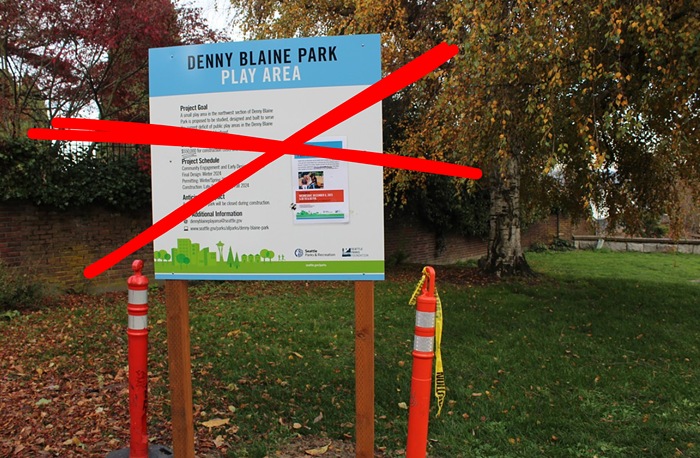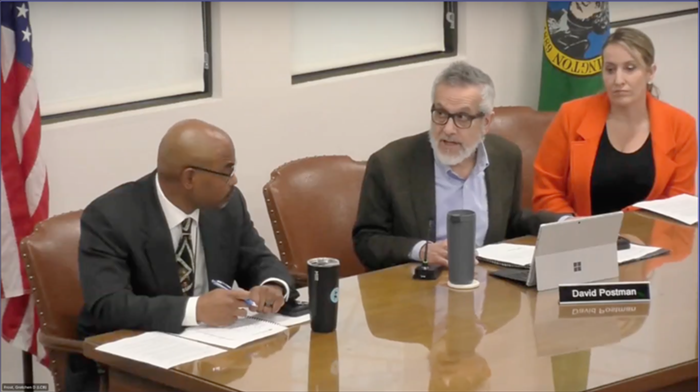Jeff Simpson couldn’t get past the fourth step: taking an inventory of himself. Part of that process asked him to think of people who had harmed him in the past.
Long addicted to meth, he started a program called Celebrate Recovery in 2010. That came after other attempts to stay clean, like when his son was born and when Simpson’s parole officer sanctioned him to 30 days in jail. If Simpson wanted to see his son grow up and avoid returning to prison for robbery and drug convictions, he was told he’d have to stop running from his problems and creating new ones. He’d have to get into treatment. That was 13 years ago, when Simpson found Jesus in a jail cell, and his life trajectory started to change.
Simpson, a teddy bear of a man with big brown eyes and a gap-toothed smile, has been in recovery ever since. But recovery hasn’t come easy.
Ask Simpson’s wife, Janice Simpson, whom he met a couple of years after he decided to get clean. “Jeff seemed to always get to a certain point [with step work] and he would fall out,” she says.
Sitting at a donut shop off a four-lane highway in the Portland suburb of Gladstone, the couple recalls how Simpson and his recovery sponsor, about a decade ago, confronted that fourth step.
“We were going through people that have harmed me in the past and what had happened,” Simpson says. “And by the time I got to my fourth step, he told me, ‘Dude, you need to get some closure on this.’”
“Dude, get a lawyer,” Janice, a home-care worker with an easy laugh, interjects. Simpson calls her the “love of my life,” and it’s clear she feels the same way about her husband of six years. “That's what he told you.”
“And that was pretty much exactly what he told me,” Simpson says. “You need to get some justice on this, and closure, and this man needs to pay for what he's done.”
“And he was saying,” Janice Simpson adds, “so maybe other children won't be abused by him.”
Simpson took his sponsor’s advice. He got a lawyer, Brian Williams, and he pursued a lawsuit against Seattle mayor Ed Murray, then a state legislator, for allegedly molesting him when he was a teenager in the 1980s.
Murray denied the allegations then, and continues to deny them today.
On April 6, the Seattle Times broke the news that another alleged child rape victim had come forward and sued Murray in King County Superior Court for child sex abuse and child prostitution. The front-page story identified the new victim by his initials, D.H., and also published Simpson and another accuser’s unaired allegations from years past. Simpson says he had no idea D.H. existed until the Seattle Times reporters told him the night before the story went live.
A week after the lawsuit was filed, it’s unclear whether D.H.’s allegations will sink Murray’s political career on the cusp of his reelection campaign. Murray has pledged to run, and his lawyers have called the claims against him meritless and politically motivated.
Back in 2008, Simpson’s attempt to pursue legal action against Murray didn’t go very far. Williams, Simpson’s attorney, found paperwork showing that the police had investigated his sexual abuse case in 1984, around when the alleged incidents happened. They tracked down another alleged victim, Lloyd Anderson, who the Times also spoke with for their story last week.
But Murray’s attorney, Katherine Heekin, told Williams that his client was a liar with a lengthy criminal record, noting convictions for robbery, kidnapping, forgery, prostitution and theft. She noted that Simpson had taken up multiple identities over his life.
"In short, the records reveal that your client is totally untrustworthy and will lie, cheat or steal as necessary to get what he wants," Heekin wrote in a letter.
Heekin also raised the issue of Oregon’s statute of limitations, which allows a child sexual abuse survivor to file a civil suit until that person is 40 years old, or up until five years after a survivor remembers or discovers abuse. Simpson first reported the alleged abuse was when he was a young teenager. In 2008, when Williams planned to pursue the case, Simpson was turning 41.
Williams told Heekin he was sensitive to the possible statute of limitations issue. In addition, he wrote, "no matter what kind of history of lying and criminal conduct Mr. Simpson has, he may, in fact, be a victim of sexual abuse by your client."
Williams later dropped the lawsuit, citing his firm’s evaluation of Simpson’s case. In a phone interview on Thursday, Williams clarified that the problem with Simpson’s case wasn’t his credibility—Williams believed him and believed he had enough corroborating evidence to prove it—but rather, concerns with the statute of limitations.
“I think one of the worst things an adult can do to a child is sexual abuse,” Williams said. “And I think the worst thing an adult can do to another adult is a false allegation of sexual abuse.”
“I personally would not be willing to pursue a case unless you had corroborating evidence and unless I believed my client,” he continued, “and in this case we had both.”
When the lawyer dropped the case, after Simpson had made significant progress with his recovery, “he was very upset,” says Kris Kirkevold, the uncle of Simpson's 13-year-old son. At the time, it seemed like his past alleged abuse was one of the biggest issues in his life. Kirkevold had helped take care of Simpson’s son while Simpson was in jail, and Simpson stayed with the Kirkevolds and their two children while he got into treatment and back on his feet.
“And then the fact that [Murray’s] in the public, that he’s doing really well,” Kirkevold says. “It hurt him to see that this guy who had done all this damage to him and other people was succeeding.”
Kirkevold also believed what Simpson told him and his wife about the alleged abuse. “There’s been no reason and no proof that he’s ever lied to us,” Kirkevold says. “He’ll tell us, like, yeah, I relapsed. I did drugs again. I need help. He’s very open and says, ‘I’m a broken guy.’”
To Kirkevold, who is also religious, Simpson is something of a miracle. “First of all, that he’s alive,” he says, “and that he’s so functional based on all he went through.”
In a phone interview, Simpson’s former addiction counselor, who wished to remain anonymous, confirmed Simpson’s struggles with his step work. “I can reassure you that whatever he told you is correct,” the counselor said.
Murray’s lawyers attempt to discredit Simpson in 2008 made him so angry that he decided he would get his story out any way he could. In the span of one frantic afternoon, he says he tried to go public by calling dozens of Washington legislators, the governor, the former Seattle mayor, the attorney general’s office, and a handful of pastors. (The Stranger reached out to all the sitting state legislators who were in office in 2008, legislators either denied remembering hearing from Simpson or they did not respond to request for comment.) Nothing came of it, he says, until now.
“I get it,” Simpson says. He imagines what those legislators must have thought when he called: “‘He's probably out there with a sign, you know, Jesus is coming,’ or something like that.”
Laughing, he says, “That's what I picture everyone was thinking about me after all this.”
All this. In the days following D.H.’s formal charges against Murray, more reporters have come knocking on Simpson and Janice Simpson’s door to ask what “all this” means. Simpson’s not typically a paranoid person, but has installed a board across the back door and now locks his windows just in case. He’s still willing to talk, though, to anyone who will listen.
“I've been praying about getting this out so people can hear it, and let chips fall where they may,” Simpson says. “But I'm not lying. And I don't know how to prove that I'm not, but I'm willing to do whatever it's going to take.”
Simpson says he met Ed Murray when the mayor worked at the Parry Center, where Simpson was sent as a toddler after playing with long stick matches and accidentally burning down his adoptive parents’ home. He never played with matches again after that, he says, but the state categorized him as a pyromaniac. The label effectively made him un-adoptable.
Murray showed him care, brought him presents, and welcomed him into his home. It was during one of those overnight stays at Murray’s, as the Seattle Times reported, that Simpson says Murray molested him.
At first, Simpson says, he gave Murray a pass. “I felt that he had just messed up at first because I told him I didn't want to,” he recalls. “I kept telling him no when it first happened and he stopped at one point. But I knew that I didn't want to do it.”
After that alleged encounter, Simpson started cutting himself with glass. He was put in a psychiatric ward, but still didn’t tell anyone what was going on. He says he thought Murray might stop. “Unfortunately it did happen again,” Simpson says. “It happened a lot more.”
Today, the skin on Simpson’s inner left forearm bears dozens of white horizontal scars that climb up to his elbow. The last gash, just beneath his palm, cut to the tendon and required eight stitches, he tells me. That one came after a fight with Murray, he says, in which Murray kicked Simpson out of the house.
Still, Simpson kept going back to Murray, who he considered a father figure. At Murray’s, Simpson says he could smoke pot, hang out with his friends, and play records. And more than a father figure, Murray also became his teacher. Together, Simpson says they talked about Jeff’s biracial identity (he’s half-black, half-white), Martin Luther King Jr., and Malcolm X.
Murray also taught Simpson about what it meant to be gay in America, he says. “And the struggles that people go through, you know what I mean, people kill themselves over that.”
That’s why it was so hurtful when Murray’s attorneys characterized his accusation—and others’—as a politically motivated attack. Simpson concedes that he called an anti-gay pastor, Rev. Ken Hutcherson, for help on his case, saying that his name popped up in an internet search. He called any pastor that was willing to hear his story, he says, claiming he didn’t know about Hutcherson’s anti-gay views at the time. The mayor’s team, in their response to Simpson’s claims, noted that the 2008 accusations were promoted by “extreme right-wing anti-gay activists in the midst of the marriage equality campaign.”
In response to a detailed list of questions about the nature of Murray and Simpson’s relationship, the mayor’s personal spokesman, Jeff Reading, sent us an alternate version of events that transpired between the two in the 1980s. Reading’s statement says Simpson had a sad and rough upbringing, and he attached himself to Murray when he worked at the youth center. Murray, Reading said, believed he could help Simpson.
Simpson often ran away from his group home to Murray’s after the mayor left his job at the youth center, Reading said by e-mail. Murray repeatedly returned him back to the courts, and eventually, the court suggested that Simpson be placed in Murray’s custody.
Reading also said that Simpson had a serious drug problem, but Murray never allowed Simpson to use drugs when they were living together. The mayor never sexually abused Simpson, Reading said.
Reading’s statement continued:
“Jeff’s drug problem rapidly spiraled out of control, prompting Mayor Murray to terminate the foster placement. After the foster placement was terminated, Jeff made false allegations to law enforcement. Law enforcement investigated and declined to prosecute.”
Lawyers encouraged Murray to keep pursuing his political career, Reading added, and Simpson later apologized to Murray and sent him updates and photos of himself and his family.
When The Stranger reached out to Murray’s current lawyer, Bob Sulkin, about Simpson’s old allegations, he directed questions to Katherine Heekin, Murray’s old lawyer. (Heekin then directed The Stranger’s inquiries back to Sulkin.)
“I understand that law enforcement looked into the charges and found them to be meritless,” Sulkin said in an e-mail, and the Seattle Times concluded that the allegations were not worthy of printing.”
Hours after Sulkin sent that e-mail, KING 5 published a handwritten letter Simpson sent to Murray in 2005. Sulkin had given Simpson’s letter to the TV station. The letter was chipper in tone, and in it, Simpson told Murray he swelled with pride when he saw him on TV. It ended with, “God bless you Ed.”
The way Simpson explains that letter today is that in 2005 he had just gotten out of treatment and was still trying to hold onto his “sick past.” Ed Murray, he says, was still the only person he had in the world.
“I hadn’t gotten to the point in my life yet where I was ready to let Ed go as the fantasy I had in my life,” Simpson says. “Regardless of whether I think of Ed as my father or not, he has done things that have hurt me very bad.”
It was only in 2007, he says, that Simpson made the commitment to get closure with Murray and heal.
Further, Simpson says his original allegations at that time had nothing to do with anti-gay bias. “That's the kind of stuff I stand [against], because, and I honestly believe that's one of the things that Ed put in my heart, because it's not right,” Simpson says. “And I can identify with him because I go through some of the same stuff. My past as a career criminal, as, you know, as a recovering addict, I can identify with people looking at me differently. But God loves us all the same.”
“Eight years ago, when he came forward, it had nothing to do with politics,” Janice Simpson adds. “Because it's not political.”
Simpson was watching a movie with his 13-year-old son, Stormy, when the Seattle Times reporters knocked on his door in early March. The Simpson family rarely receives visitors at their apartment so Stormy asked if it was okay to answer.
After 30 years, talking to the Seattle Times was the first time Simpson says he’s told his story in full detail. It was a relief to talk to someone who actually wanted to know, and cared. After Simpson finished telling his story to the Seattle Times reporters, Janice Simpson gave him a 12-step Celebrate Recovery coin. To her, he had not only completed the fourth step, but had done the entire program in one night.
“Probably 10 years from now, when he talks about this story he's probably still going to hurt, though,” she says. “I don't think it's something that ever, that you're ever relieved of that pain. That heart pain doesn't go away.”
Asked if that’s where he feels it, that place in the center of his chest, Simpson’s face goes blank.
“That's one place I feel it,” he says, his eyes lowering to the table. “Definitely right there. But I feel it all over, you know what I mean. It's just one of those gloom things that comes over me and I just, I feel sad and depressed and you know, you just want to cry sometimes.”
The way Simpson reacted in this moment is subtle, but significant. The light left his face. If he isn’t telling the truth, perhaps he still believes he is. If he is telling the truth, his friend Kris Kirkevold might be right—it’s a miracle he’s alive.
“But I just don't want, you know, I don't want to be stuck with this over my head,” Simpson continues. “This doesn't have to weigh me down, you know what I mean. I can and will work through this, you know what I mean, no matter what the outcome is. And Jesus is there for me, you know what I mean, and you, [Janice], and I'm sorry…”
“I'm not going nowhere,” Janice Simpson tells him.
Jeff and Janice hold hands. She has to get up at 4 a.m. to go to work, and it’s time they get something to eat.
“No, and I know that you're not,” Jeff tells her. “And you know, alls I can do is be honest, and be there, and,” he says, “I'm willing to talk to anybody about this.”
Heidi Groover and Steven Hsieh contributed reporting.
Correction: A previous version of this article misidentified the fourth step in the Celebrate Recovery program.



















